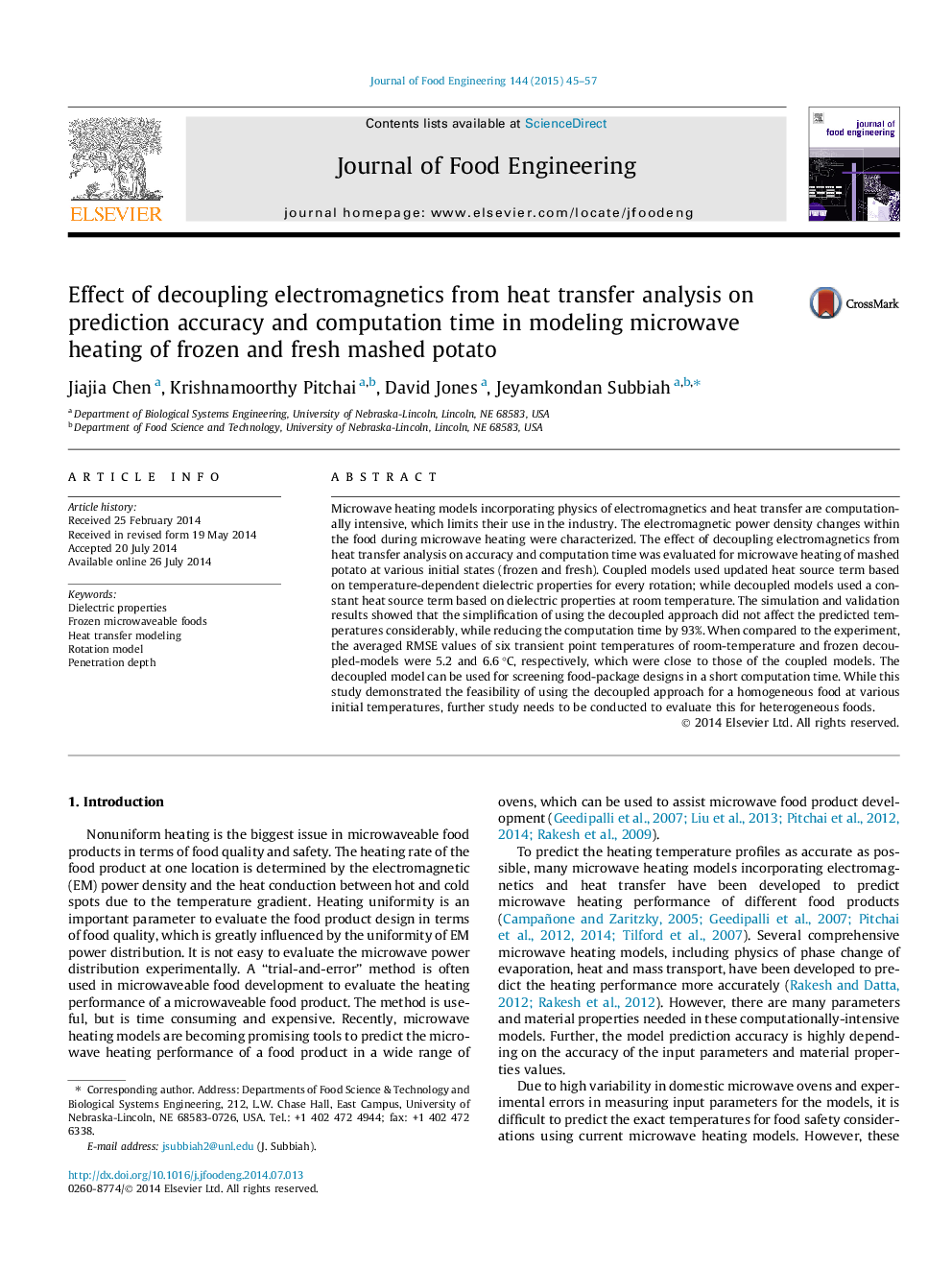| کد مقاله | کد نشریه | سال انتشار | مقاله انگلیسی | نسخه تمام متن |
|---|---|---|---|---|
| 223006 | 464322 | 2015 | 13 صفحه PDF | دانلود رایگان |
• EM power density distribution of refrigerated and room-temperature food is similar.
• Frozen product absorbed slightly less energy than fresh food at the beginning.
• In 20 s, frozen product absorbed similar energy as fresh food.
• Decoupling did not introduce any significant errors in temperature prediction.
• Decoupling reduced the computation time by 93%.
Microwave heating models incorporating physics of electromagnetics and heat transfer are computationally intensive, which limits their use in the industry. The electromagnetic power density changes within the food during microwave heating were characterized. The effect of decoupling electromagnetics from heat transfer analysis on accuracy and computation time was evaluated for microwave heating of mashed potato at various initial states (frozen and fresh). Coupled models used updated heat source term based on temperature-dependent dielectric properties for every rotation; while decoupled models used a constant heat source term based on dielectric properties at room temperature. The simulation and validation results showed that the simplification of using the decoupled approach did not affect the predicted temperatures considerably, while reducing the computation time by 93%. When compared to the experiment, the averaged RMSE values of six transient point temperatures of room-temperature and frozen decoupled-models were 5.2 and 6.6 °C, respectively, which were close to those of the coupled models. The decoupled model can be used for screening food-package designs in a short computation time. While this study demonstrated the feasibility of using the decoupled approach for a homogeneous food at various initial temperatures, further study needs to be conducted to evaluate this for heterogeneous foods.
Journal: Journal of Food Engineering - Volume 144, January 2015, Pages 45–57
